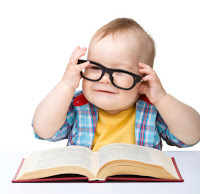

| Visitors Now: | |
| Total Visits: | |
| Total Stories: |

| Story Views | |
| Now: | |
| Last Hour: | |
| Last 24 Hours: | |
| Total: | |
The jokes that toddlers make
Few sounds can be as heart-warming as a chuckling toddler. Often they’re laughing at a joke you or someone else has performed, but what about their own attempts at humour? To find out, Elena Hoicka and Nameera Akhtar filmed 47 parent-child pairs (just five involved dads) playing for ten minutes with various toys. The kids were English-speaking and aged between 2 and 3 years.
Coding of the videos revealed 7 forms of humour performed by the toddlers: using objects in an unconventional way (e.g. brushing a pot); deliberately mislabelling things (e.g. holding a cat but saying “here’s a fish”); making deliberate category errors (e.g. making a pig go “moo”); breaching taboos (e.g. spitting and saying “that’s disgusting”); performing funny bodily actions (e.g. falling back and putting their legs in the air); tickling and chasing; and playing peekaboo.
There were signs of maturing humour abilities. The three-year-olds more often made conceptual humour than the two-year-olds, and they showed a trend towards more label-based humour. Two-year-olds depended predominantly on object-based humour. Moreover, whereas the two-year-olds were just as likely to copy or riff off their parent’s jokes as to make their own original attempts at humour, the three-year-olds most often came up with original jokes.
There was also good evidence that the toddlers were being deliberately humorous and not just making mistakes. When engaged in a funny behaviour versus an unfunny act, they were four times as likely to look and laugh at their parent, twice as likely to laugh without looking, and three times as likely to smile and look. “Children only increased smiling in combination with looks to parents, indicating parents should share their humour,” the researchers said.
An online survey of 113 British parents (9 dads) about their children’s humour largely supported the observational data. The children in this sample included infants and so an extended timeline of humour-production was possible. Before one year, infants mainly produced humour through peekaboo; from one year they graduated onto chasing and tickling and funny body movements; from two years they started object-based, conceptual and taboo-based jokes; and from age three they started label-based jokes.
The researchers said their results showed: “toddlers produce novel and imitated humour, cue their humour, and produce a variety of humour types.”
_________________________________
![]()
Hoicka, E., and Akhtar, N. (2012). Early humour production. British Journal of Developmental Psychology, 30 (4), 586-603 DOI: 10.1111/j.2044-835X.2011.02075.x
–Further reading–
Little comedians.
Post written by Christian Jarrett for the BPS Research Digest.
The Research Digest is a free blog and email newsletter published by the British Psychological Society and written by Christian Jarrett. Also find us on Twitter and Facebook.
2012-11-15 03:22:05
Source: http://bps-research-digest.blogspot.com/2012/11/the-jokes-that-toddlers-make.html
Source:



